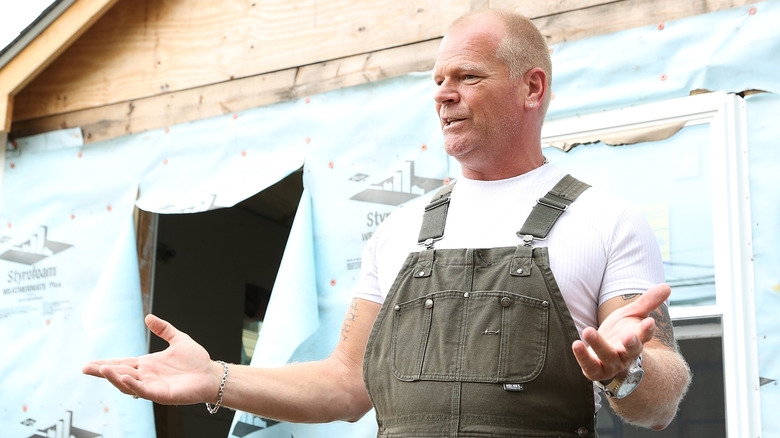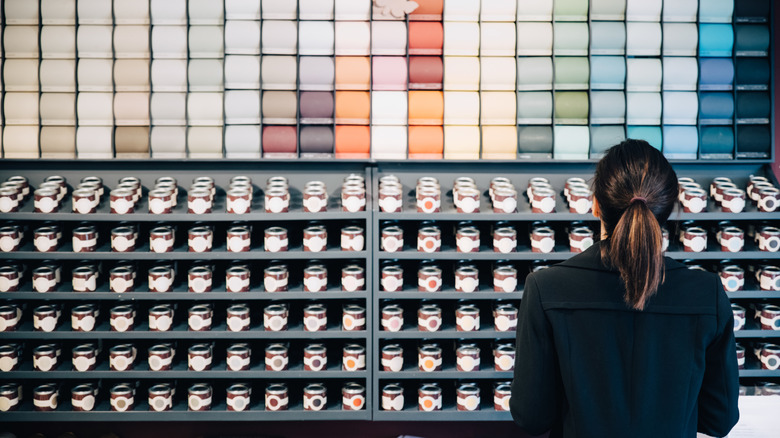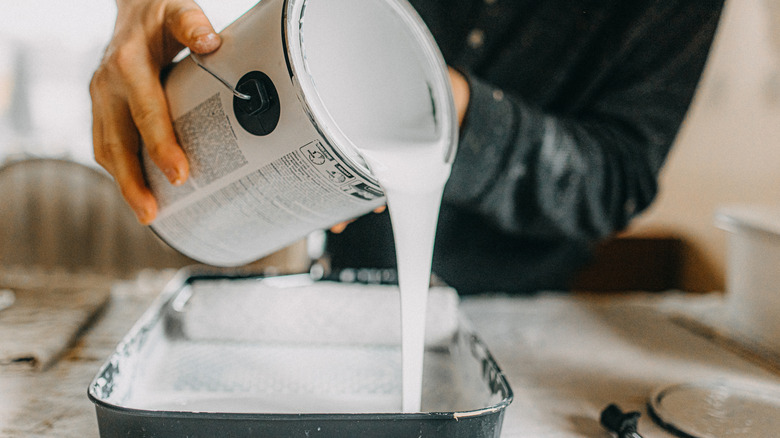The Popular Paint Product HGTV's Mike Holmes Warns To Avoid
When it comes to home DIY projects, we want to work smarter, not harder, right? With the rise of paint and primer-in-one products, it feels like we can finally save time and still make it look like your home was painted by a professional. But Mike Holmes, professional contractor and host of HGTV's "Holmes on Homes," wants you to think twice before choosing a paint and primer-in-one product. "Personally, I'm not a fan. Why? The job of a primer is to help the paint adhere to the surface you're painting — and not all primers perform the same function. Some are meant to suppress stains, while others are meant to make your chosen paint color look more saturated," Holmes says on his website, Make It Right.
Holmes urges home decorators to consider what they want to cover up. If you want to repaint the wall the same color, you likely don't need a primer. But if you're trying to cover smoke damage or paint-stained wood, applying a separate primer is key. Or, if you're transitioning from a darker color to a lighter one, Holmes suggests using a tinted primer before you paint to make the job easier. Here we take a closer look at the hidden downsides of using a paint and primer-in-one product to help you determine whether or not they're the right choice for your paint project.
What to consider when deciding if a paint and primer-in-one is right for you
Anyone who has painted a wall knows it's not a quick job. After prepping your walls for painting, you then have to apply several color coats, letting it dry in between. Thanks to boosted stain-blocking and sticking power, paint and primer-in-one products offer to save DIYers a step by combining priming and painting into one step. It's an understandable allure.
The first thing to consider when deciding if this paint product is worth it is the project itself. If you're repainting a wall the same or similar color, a paint and primer in one may work. But, to Holmes' point, if you want to change colors or are painting something aside from a previously painted wall, it may be worth the time and effort to prime.
The other consideration is the budget. Holmes points out, "Using the proper tinted primer can actually help cut down on the number of coats you need to give a room." This means that by using the correct primer for the job instead of an all-in-one product, you may actually end up using less paint, which could lead to significant savings, especially in large rooms.
Tips to find the right primer
If you've determined that purchasing finish paint and primer separately is right for your project, there are a few things to keep in mind when shopping for primer. First, think twice before using white paint in place of primer. While it might seem similar, white paint doesn't have the same color-blocking properties. Primer, on the other hand, works more like an adhesive to help the color coat stick to the wall.
There are multiple types of primer out there, but the best way to decide which one is best is to use what you're painting as a guide. Latex primers are a good choice for interior surfaces without damage, and they make for an easy clean-up. If you're painting an item with some staining or something with a little damage, a shellac-based primer might be your best bet. If you're painting wood, an oil-based primer is a good choice.
Whichever primer you select, make sure you properly clean the surface before painting and let it dry completely before you apply the finish coat. This allows the primer to create a solid foundation for your new color, so you get a long-lasting, durable paint job.


